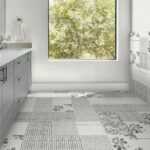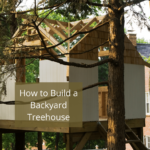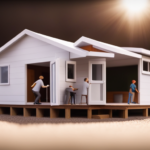Building a Tiny House
Tiny House Drywall Alternatives
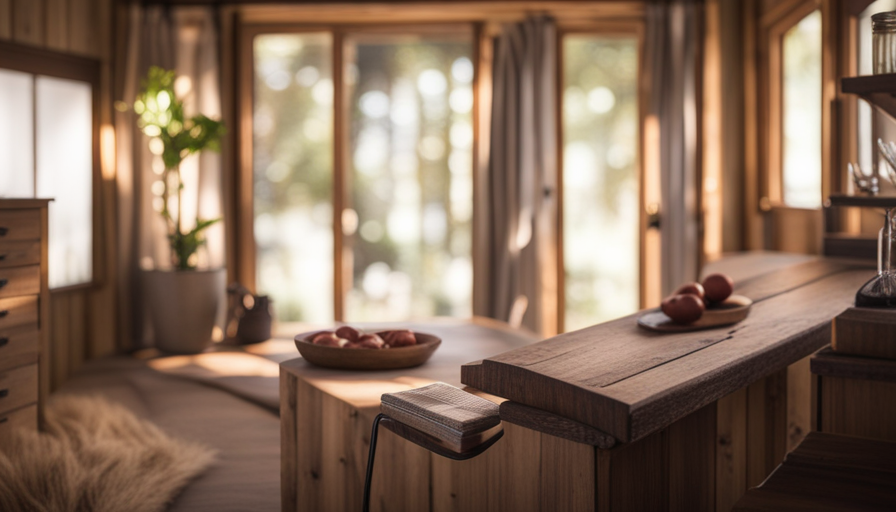
The adage ‘variety is the spice of life’ couldn’t be more accurate, especially in the context of constructing a tiny house. While drywall tends to be the predominant choice for interior walls, it’s by no means the only possibility.
In fact, there are a plethora of alternatives that can give your tiny home a unique and stylish look. From shiplap and plywood to reclaimed wood and metal panels, the possibilities are endless.
But why limit yourself to traditional materials when there are more innovative options available? Consider corkboard, bamboo, polycarbonate sheets, or even glass panels to bring a touch of modernity and sustainability to your tiny abode.
And let’s not forget about the environmentally conscious option of using recycled materials.
So, whether you’re looking for a rustic, industrial, or contemporary aesthetic, exploring these tiny house drywall alternatives will certainly add character and charm to your compact living space.
Key Takeaways
- Shiplap is a charming and rustic alternative to drywall for tiny houses.
- Plywood is a versatile and cost-effective option with a smooth surface for painting or wallpaper.
- Reclaimed wood adds character, warmth, and sustainability to interior walls.
- Metal panels provide a sleek and modern aesthetic that is durable, moisture-resistant, and easy to clean.
Shiplap
If you’re looking for a charming and rustic way to finish the walls of your tiny house, shiplap is the perfect choice for you. Shiplap installation involves fitting wooden boards together horizontally, creating a distinctive and visually appealing pattern.
Compared to traditional drywall, shiplap offers a unique aesthetic that adds character and warmth to any space. It can be installed directly onto the studs or over existing drywall, making it a versatile option for tiny house owners.
Not only does shiplap provide a timeless look, but it also offers durability and strength. The interlocking design of shiplap boards helps to minimize the risk of cracks and warping, ensuring a long-lasting finish.
Now let’s dive into the next section about plywood and explore another alternative to traditional drywall.
Plywood
Although plywood is commonly used in construction, it offers a versatile and cost-effective option for interior wall finishing. When comparing plywood to shiplap as a drywall alternative, there are several factors to consider.
Plywood is a manufactured wood product that consists of multiple layers of thin wood veneers glued together, providing strength and stability. It is available in various thicknesses, allowing for customization based on the desired application. One advantage of plywood over shiplap is its smooth surface, which makes it easier to paint or apply wallpaper. Additionally, plywood can be easily cut to fit any space, making it a practical choice for tiny houses with unique layouts.
However, it is important to consider the pros and cons of using reclaimed wood for plywood, as it may have issues such as warping or insects.
Transitioning into the next section, exploring the use of reclaimed wood can add character and sustainability to tiny house interiors.
Reclaimed wood
Reclaimed wood, with its unique and rustic charm, has gained popularity in interior design, with a staggering 270% increase in its use in the past decade alone. When it comes to tiny house construction, reclaimed wood can serve as a viable alternative to drywall.
Not only does it add character and warmth to the space, but it also offers several benefits. One of the main advantages of using reclaimed wood as insulation is its superior thermal performance. The natural fibers and air pockets within the wood help to regulate temperature and reduce energy consumption.
Additionally, reclaimed wood is environmentally friendly, as it repurposes materials that would otherwise go to waste. By incorporating reclaimed wood into the interior of a tiny house, homeowners can create a cozy and sustainable living space.
Transitioning into the subsequent section about ‘metal panels’, another alternative to drywall, we can explore the sleek and modern aesthetic they provide.
Metal panels
For a sleek and modern look in your interior design, metal panels offer a striking and contemporary aesthetic. Metal panel installation is a straightforward process that involves measuring, cutting, and attaching the panels to the walls or ceiling.
There are several advantages to using metal panels in your tiny house. Firstly, they’re durable and resistant to moisture, making them ideal for areas prone to humidity or condensation. Secondly, they’re easy to clean and maintain, requiring minimal effort to keep them looking pristine. Lastly, they’re versatile and can be customized to fit any space, allowing for endless design possibilities.
Transitioning into the subsequent section about ‘corkboard’, incorporating a different material like corkboard can add warmth and texture to your tiny house interior.
Corkboard
To add a cozy touch to your interior, try incorporating corkboard into your design – it’s like wrapping your walls in a warm and comforting hug.
Corkboard is not only a sustainable and eco-friendly choice, but it also offers excellent insulation properties. The natural cork material acts as a thermal barrier, keeping your tiny house warm in the winter and cool in the summer. Additionally, corkboard has great sound absorption qualities, reducing noise transfer between rooms.
When it comes to wall finishes, corkboard offers a unique texture and visual appeal. You can choose from a variety of corkboard designs, ranging from smooth to textured, and even incorporate different colors and patterns. The versatility of corkboard allows you to create a personalized and visually interesting interior.
Transitioning into the next section about fabric panels, another alternative for your tiny house walls is using fabric panels.
Fabric panels
Imagine transforming your space with the softness and warmth of fabric panels, creating a cozy and inviting atmosphere that will make you never want to leave. Fabric panel installation is a simple and cost-effective alternative to traditional drywall in tiny houses.
These panels are typically made of acoustic fabric and can be easily mounted on the walls using adhesive or Velcro. Fabric panels offer a multitude of benefits. They not only add a touch of elegance to any space but also provide soundproofing capabilities, making them perfect for tiny houses. The fabric absorbs sound waves, reducing echo and creating a quieter environment.
Additionally, fabric panels are lightweight and easy to clean, making maintenance a breeze. Transitioning to the next section about ‘bamboo,’ it’s important to consider all the options when choosing an alternative to drywall for your tiny house.
Bamboo
If you’re looking to add a touch of natural beauty and durability to your space, bamboo is like a sturdy and versatile warrior that can transform your walls into a work of art.
Bamboo is not only aesthetically pleasing, but it’s also a sustainable material choice for tiny house construction. Bamboo grows quickly, making it a renewable resource that can be harvested without causing significant environmental harm.
In terms of cost, bamboo is a cost-effective option compared to traditional drywall. While the upfront cost of bamboo may be slightly higher, it requires less maintenance and is more resistant to damage, making it a long-term investment.
Transitioning to the subsequent section, polycarbonate sheets offer another alternative for tiny house walls.
Polycarbonate sheets
Transform your space with the stunning and versatile warrior, polycarbonate sheets, as they bring a touch of modernity and durability to your walls. When it comes to tiny house interior walls, polycarbonate sheets offer numerous benefits.
Firstly, they’re incredibly lightweight, making them easy to handle and install. Additionally, they’re highly resistant to impact, making them ideal for high-traffic areas. Their transparency allows for ample natural light to fill the space, creating a bright and airy atmosphere.
Installing polycarbonate sheets in a tiny house for a modern look is a straightforward process. Simply measure and cut the sheets to fit your desired dimensions, then secure them to the wall using screws or adhesive. With their sleek design and practical features, polycarbonate sheets are a fantastic choice for tiny house owners looking to enhance their living space.
Transitioning to the subsequent section about glass panels, consider the elegance and sophistication that can be achieved with this alternative.
Glass panels
With glass panels, your space will be filled with a mesmerizing glow as natural light dances through the translucent panes, adding an ethereal touch to your walls. Glass panel installation in tiny house construction offers numerous benefits.
Firstly, glass panels create a sense of openness and spaciousness, making even the smallest of spaces feel larger. Secondly, they provide excellent insulation, reducing the need for excessive heating or cooling. Lastly, glass panels are durable and easy to maintain, ensuring that your tiny house remains in pristine condition for years to come.
Transitioning to the next section about ‘recycled materials’, incorporating sustainable elements into tiny house construction not only benefits the environment but also adds a unique charm to your living space.
Recycled materials
Using recycled materials in construction brings a touch of sustainability to your living space, while also adding character and charm. When it comes to tiny house construction, there are several options for incorporating recycled materials. Two popular choices are upcycled plastic and salvaged metal.
Recycled Material Benefits Upcycled Plastic – Environmentally friendly
– Durable and long-lasting
– Versatile for various applications
– Can mimic the look of other materials
– Resistant to moisture and pestsSalvaged Metal – Strong and sturdy
– Fire-resistant
– Can be easily repurposed
– Adds an industrial aesthetic
– Provides excellent insulation
Upcycled plastic is a fantastic option for tiny house construction. It can be transformed into durable siding, roofing, or even flooring. This material is not only eco-friendly, but it also offers resistance to moisture and pests, making it ideal for tiny houses that may face outdoor elements. Salvaged metal, on the other hand, is known for its strength and versatility. It can be repurposed from old items like shipping containers or reclaimed from construction sites. Salvaged metal adds an industrial aesthetic to your tiny house and provides excellent insulation. By incorporating these recycled materials, you can create a sustainable and unique living space.
Frequently Asked Questions
Are there any specific building codes or regulations that apply to the use of these alternative materials for tiny house construction?
Building code requirements are essential in ensuring the safety and structural integrity of any construction project. However, when considering alternative materials for tiny house construction, it’s important to note that there may be potential limitations. These materials may not always meet the specific building code requirements set forth by local authorities.
It’s crucial to thoroughly research and consult with professionals to ensure compliance with all applicable regulations and to guarantee the use of suitable materials for your tiny house project.
How durable are these alternative materials compared to traditional drywall?
Durability comparison between traditional drywall and alternative material options varies. Traditional drywall is known for its strength and durability, but alternative materials offer unique advantages.
For instance, cement board is highly resistant to moisture and mold, making it ideal for humid environments. Fiberglass reinforced panels are extremely durable and resistant to impact, making them suitable for high-traffic areas.
Each alternative material has its own set of advantages in terms of durability, offering viable options for various construction needs.
Can these alternative materials be easily painted or finished to match the aesthetic of the tiny house?
Painting alternative materials and finishing them to match the desired aesthetic of a space can be easily achieved. These materials are designed to be receptive to various types of finishes, such as paint, stain, or sealants. Before applying any finish, proper surface preparation is crucial to ensure adhesion. This may involve cleaning, sanding, or priming the material. Once prepared, the alternative material can be painted or finished just like traditional drywall, allowing for customization and integration into the overall aesthetic of the tiny house.
Are there any special considerations or precautions to take when installing or working with these alternative materials?
When it comes to installing or working with alternative materials, there are indeed some special considerations and precautions to keep in mind. First, you may need to invest in special tools such as heavy-duty shears or a router to cut and shape these materials.
Additionally, safety should always be a top priority, as some alternatives can release harmful particles when cut or sanded. It’s important to wear proper protective gear, work in a well-ventilated area, and follow the manufacturer’s instructions carefully to ensure a successful and safe installation process.
Are these alternative materials resistant to moisture or suitable for use in bathrooms or other high humidity areas of the tiny house?
Moisture resistance is a crucial factor to consider when selecting materials for high humidity areas like bathrooms in a tiny house. It’s important to choose alternative materials that are specifically designed to withstand moisture and humidity. These materials should have properties that prevent water damage, such as being mold and mildew resistant. Additionally, they should have a strong moisture barrier to prevent the absorption of water and the subsequent degradation of the material.
Conclusion
After researching and considering various alternatives to drywall for tiny houses, it’s clear that there are numerous options available that can provide both functionality and aesthetic appeal. Whether it’s the rustic charm of shiplap, the versatility of plywood, or the eco-friendliness of reclaimed wood, each alternative has its own unique advantages.
For example, in a recent case study, a couple built their tiny house using bamboo panels as an alternative to drywall. Not only did the bamboo add a touch of natural beauty to their space, but it also provided a durable and sustainable solution.
I’m Theodore, and I love tiny houses. In fact, I’m the author of Tiny House 43, a book about tiny houses that are also tree houses. I think they’re magical places where imaginations can run wild and adventures are just waiting to happen.
While tree houses are often associated with childhood, they can be the perfect adult retreat. They offer a cozy space to relax and unwind, surrounded by nature. And since they’re typically built on stilts or raised platforms, they offer stunning views that traditional homes simply can’t match.
If you’re looking for a unique and romantic getaway, a tree house tiny house might just be the perfect option.
Expert Tips
How Do I Anchor My Tiny House on Wheels

Are you curious about how to safely secure your tiny house on wheels? Look no further!
In this article, I’ll guide you through the different types of anchoring systems and help you choose the best method for your needs.
With a step-by-step approach, I’ll show you how to anchor your tiny house for stability and safety, even in windy conditions.
Plus, I’ll share maintenance tips to ensure your anchoring system remains reliable.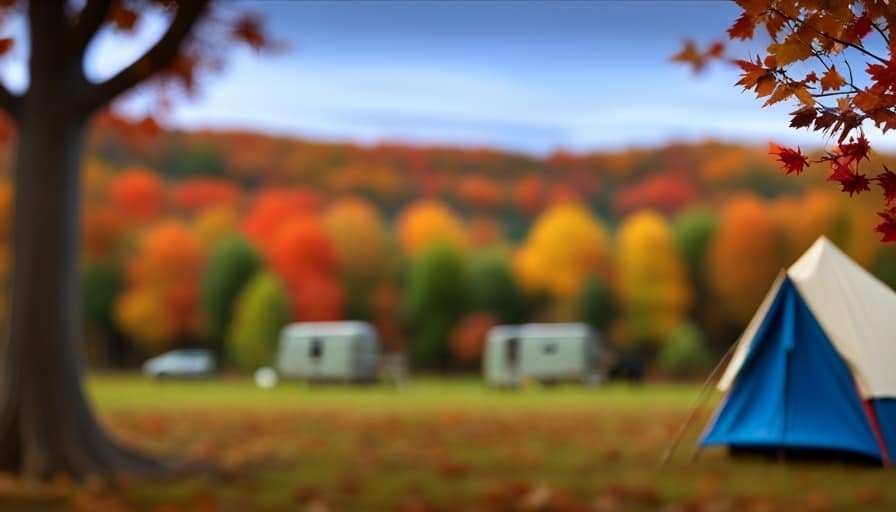
Let’s get started on keeping your tiny house grounded!
Key Takeaways
- There are various types of anchoring systems available for tiny houses on wheels, including screw-in ground anchors, concrete footings, heavy-duty straps or cables, and ground anchors.
- Factors such as soil composition, climate conditions, building codes, house weight, and accessibility should be considered when choosing an anchoring system for a tiny house on wheels.
- The installation process typically involves site preparation, marking anchor points, digging holes or drilling, installing anchors, and securing the house.
- Regular maintenance and inspection are necessary for ensuring the stability and safety of the anchoring system, including inspections, tightening hardware, repairing or replacing damaged anchors, cleaning and removing debris, and monitoring soil erosion.
Different Types of Anchoring Systems
I’ll discuss the different types of anchoring systems for my tiny house on wheels.
When it comes to anchoring a tiny house, there are several innovative solutions available that provide stability and security.
One common option is using screw-in ground anchors, which are versatile and easy to install. These anchors are driven into the ground and provide a strong hold, even on uneven terrain.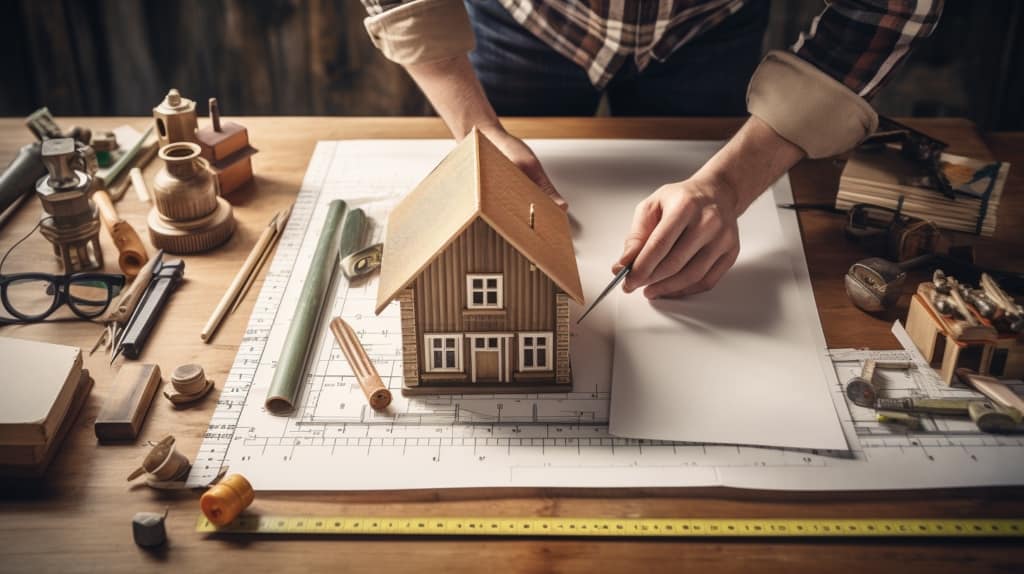
Another option is using concrete footings, which provide a solid foundation for the house. These footings can be poured directly into the ground or placed on top of pre-existing concrete pads.
Additionally, using heavy-duty straps or cables can help anchor the house to nearby trees or other structures. These solutions address the challenges of anchoring on uneven terrain by providing stability and preventing movement.
Factors to Consider When Choosing an Anchoring Method
Considering the terrain and weather conditions is crucial when selecting an anchoring method for my tiny house on wheels. The effectiveness of the anchoring method depends greatly on the composition of the soil. Here are three factors to consider when choosing an anchoring method:
-
Soil composition: Different soils have different load-bearing capacities. It’s important to understand the soil composition of the site where the tiny house will be parked. Clay soils, for example, tend to expand and contract with moisture changes, which can affect the stability of the anchoring system.

-
Cost comparison: Each anchoring method has its own pros and cons in terms of cost. Concrete footings may provide a strong and durable foundation, but they can be expensive and time-consuming to install. On the other hand, screw-in anchors are relatively affordable and quick to install, but they may not be suitable for all soil types.
-
Weather resistance: The anchoring method should be able to withstand various weather conditions, including strong winds and heavy rain. It’s important to choose a method that’s designed to handle the specific weather patterns of the area where the tiny house will be located.
Considering these factors will help me make an informed decision about the most suitable anchoring method for my tiny house on wheels.
Step-by-Step Guide to Anchoring Your Tiny House on Wheels
First, I’ll outline the step-by-step guide to anchoring my tiny house on wheels. This guide will provide you with cost-effective anchoring options and DIY anchoring techniques that you can easily implement.
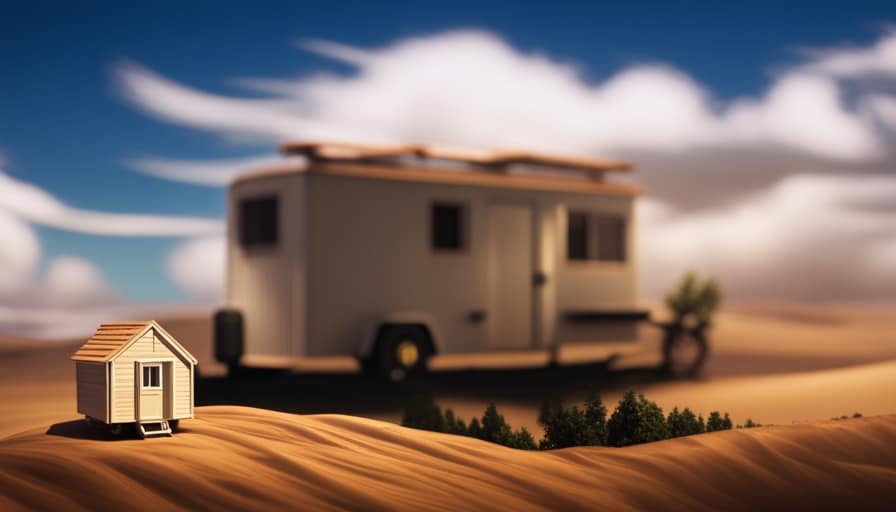
Here is a table that breaks down the steps involved:
| Step | Description |
|---|---|
| 1 | Choose the right anchoring method based on your location and soil type. |
| 2 | Prepare the ground by clearing any debris and leveling the area. |
| 3 | Dig holes for the anchor points, ensuring they are deep enough for stability. |
| 4 | Install ground anchors or concrete footings in the holes, following manufacturer instructions. |
| 5 | Attach the anchor points to your tiny house, ensuring a secure connection. |
Tips for Ensuring Stability and Safety in Windy Conditions
To ensure stability and safety in windy conditions, I always securely anchor my tiny house on wheels using additional tie-downs and wind-resistant materials. Here are some tips for ensuring stability and safety in windy conditions:
-
Wind resistant design features for tiny houses:
-
Install hurricane straps to reinforce the connection between the walls and the foundation.

-
Use impact-resistant windows and doors to minimize the risk of breakage.
-
Opt for a low-profile design to reduce wind resistance.
-
Emergency measures for securing a tiny house in extreme weather:
-
Have a plan in place to evacuate the area if severe weather is approaching.
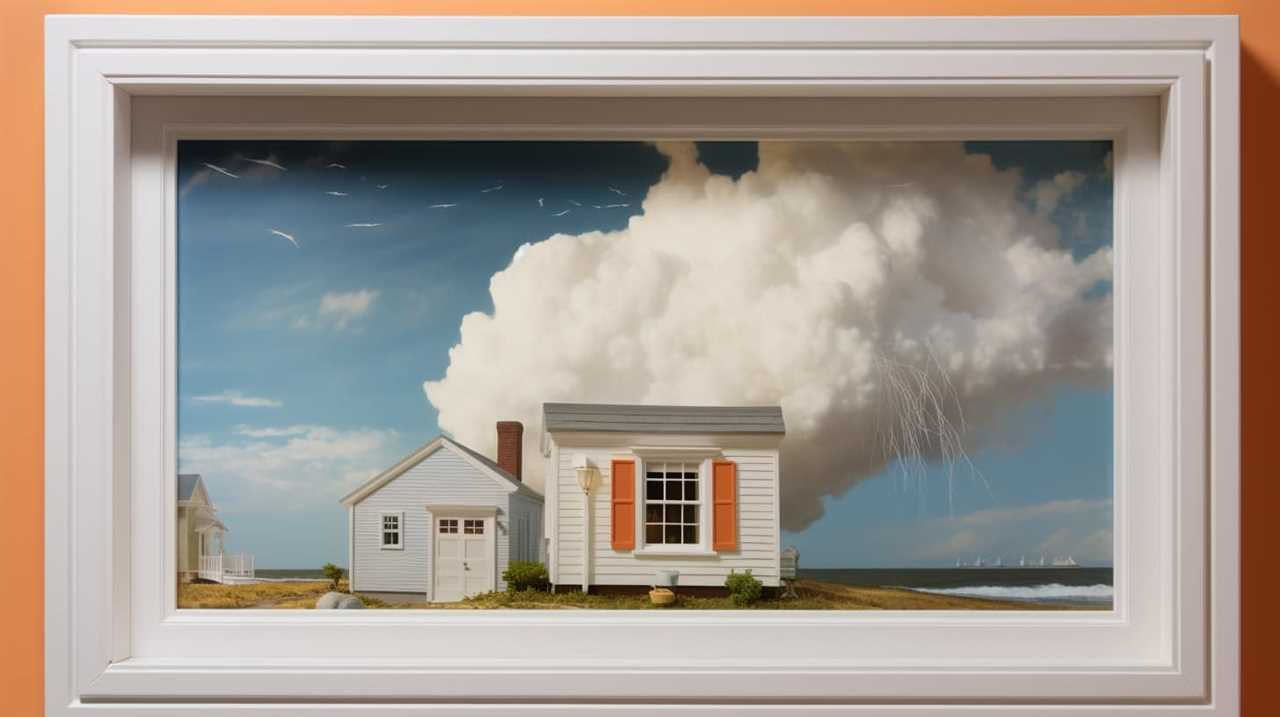
-
Use additional anchors or ground screws to provide extra stability.
-
Secure loose items around the house and remove any nearby trees or branches that could pose a risk.
Maintaining and Inspecting Your Anchoring System: Best Practices
I regularly perform inspections and maintenance on my anchoring system to ensure its effectiveness and reliability. Inspecting anchors is an essential part of maintaining the stability and safety of my tiny house on wheels.
During inspections, I carefully examine each anchor for any signs of damage or wear. This includes checking for rust, loose bolts, or bent components. If I notice any issues, I promptly address them by replacing or repairing the affected parts.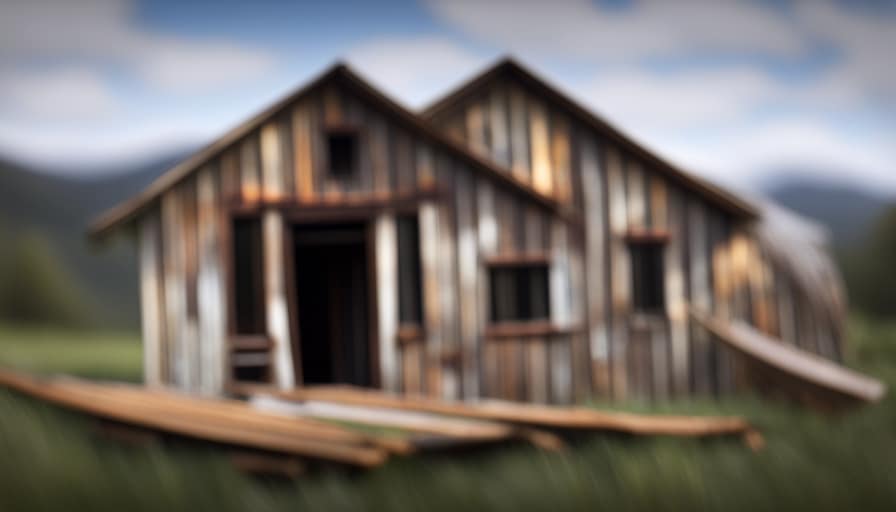
Additionally, I make sure to clean and lubricate the anchors regularly to prevent corrosion and ensure smooth operation. Anchoring system maintenance also involves checking the tension of the tie-down straps and adjusting them if necessary.
Frequently Asked Questions
Can I Use the Same Anchoring System for My Tiny House on Wheels as I Would for a Traditional Home?
I can’t use the same anchoring system for my tiny house on wheels as I would for a traditional home. I need to explore alternative anchoring methods and consider the pros and cons of different anchoring systems.
What Should I Do if My Tiny House Is Parked on Uneven Terrain?
If my tiny house is parked on uneven terrain, I need to consider alternative anchoring methods. Leveling the house is crucial, but it has its pros and cons. Let’s explore the options and find the best solution.
Are There Any Regulations or Permits I Need to Consider When Anchoring My Tiny House on Wheels?
When anchoring my tiny house on wheels, I need to consider the regulations and permits that may be required. I must ensure that the anchoring system is secure enough to withstand extreme weather conditions and moving, while also being suitable for both temporary and permanent setups.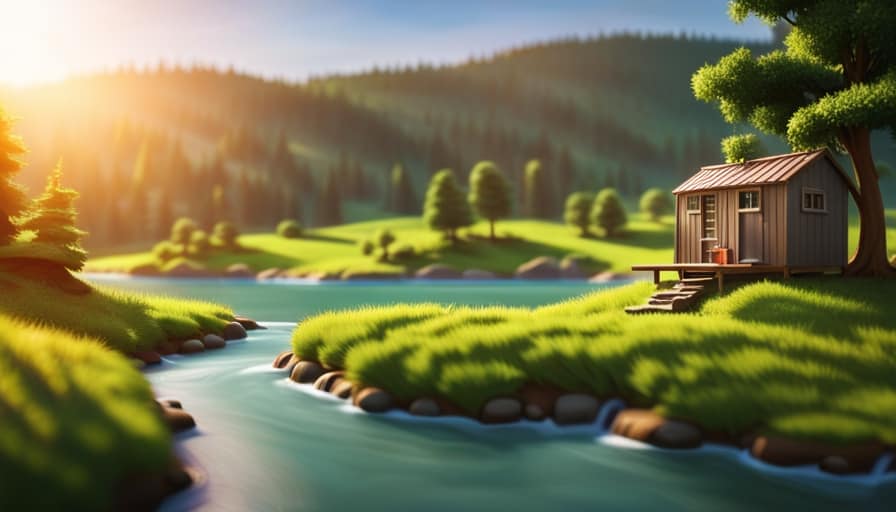
How Do I Know if My Anchoring System Is Secure Enough to Withstand Extreme Weather Conditions?
To ensure my anchoring system can withstand extreme weather conditions, I must assess its security. It is important to consult with professionals who can provide detailed guidance on the strength and effectiveness of the system.
Can I Move My Tiny House on Wheels After It Has Been Anchored, or Is the Anchoring System Permanent?
I can move my tiny house on wheels after it’s been anchored. The anchoring system has both permanent and temporary options. It provides stability during extreme weather conditions and allows for relocation when needed.
Conclusion
In conclusion, anchoring your tiny house on wheels is crucial for ensuring stability and safety.
By carefully selecting the appropriate anchoring system and following a step-by-step guide, you can secure your tiny house in place.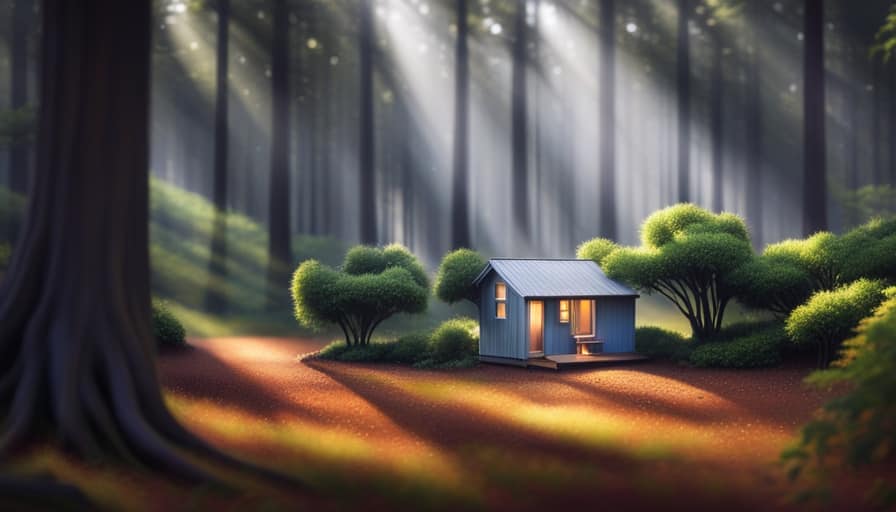
For example, in a case study, a tiny house owner used a combination of ground screws and tie-downs to anchor their house in a windy area, successfully withstanding strong gusts of wind without any movement or damage.
Regular maintenance and inspections are also essential for the long-term reliability of your anchoring system.
I’m Theodore, and I love tiny houses. In fact, I’m the author of Tiny House 43, a book about tiny houses that are also tree houses. I think they’re magical places where imaginations can run wild and adventures are just waiting to happen.
While tree houses are often associated with childhood, they can be the perfect adult retreat. They offer a cozy space to relax and unwind, surrounded by nature. And since they’re typically built on stilts or raised platforms, they offer stunning views that traditional homes simply can’t match.
If you’re looking for a unique and romantic getaway, a tree house tiny house might just be the perfect option.
Building a Tiny House
How Do I Build My Own Tiny House
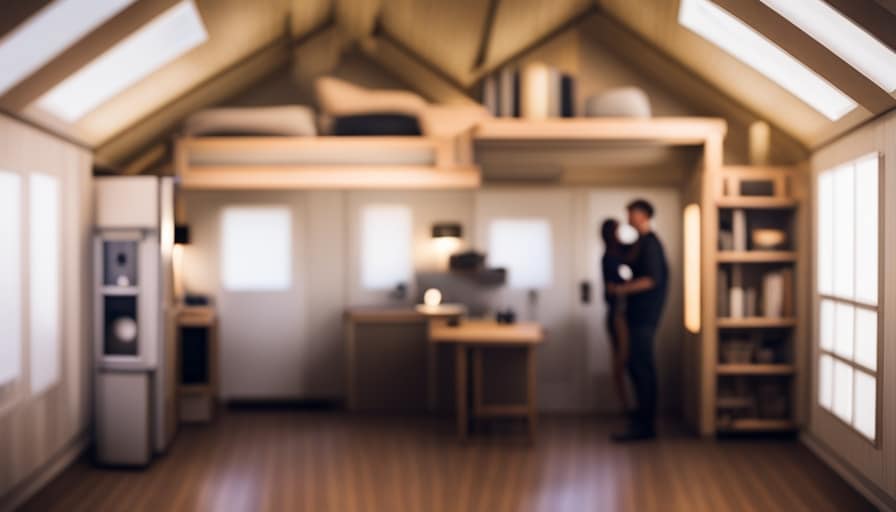
Hey! Were you aware that the average American typically allocates approximately 37% of their income towards housing expenses? It’s quite a striking figure, isn’t it?
Well, if you’re looking for an alternative, I’ve got something exciting for you. In this article, I’m going to show you how to build your very own tiny house.
From finding the perfect location to adding those finishing touches, I’ve got you covered. So let’s dive in and start making your tiny house dreams a reality!
Key Takeaways
- Location considerations are crucial for building a tiny house, including access to sunlight and clean water sources.
- Designing the layout of the tiny house requires careful consideration of every aspect, from windows to materials, to maximize space and create a cozy atmosphere.
- Familiarizing oneself with permits and legal considerations, such as local building codes and regulations, is essential to avoid fines or demolition of the tiny house.
- Choosing the right building materials and construction techniques, such as using reclaimed wood or energy-efficient insulation, ensures a sustainable and eco-friendly tiny house.
Finding the Perfect Location
I’m excited to start my journey of building my own tiny house. The first step is finding the perfect location.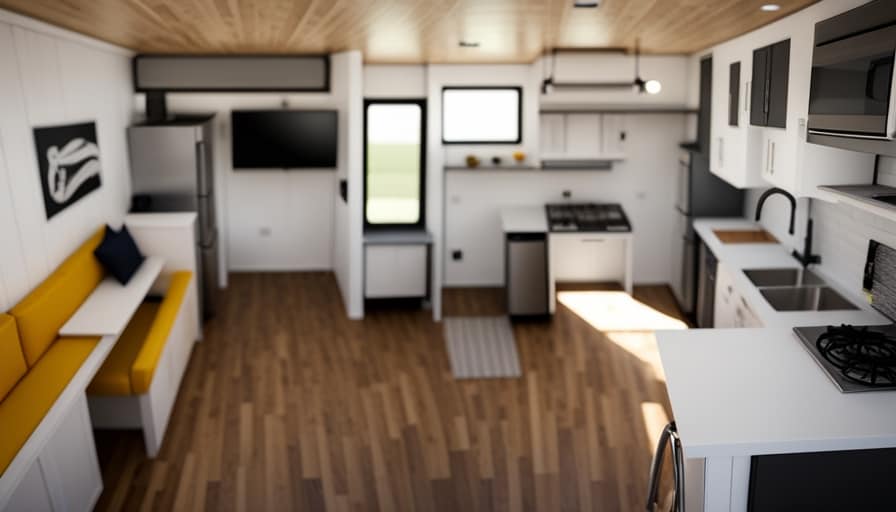
When it comes to off-grid living and sustainable building practices, location plays a crucial role. I want a spot that allows me to live independently, relying on renewable energy sources and minimizing my carbon footprint.
Ideally, I’d choose a piece of land that receives ample sunlight for solar panels and has access to clean water sources. It’s also important to consider zoning regulations and building codes in the area to ensure compliance with local laws.
By finding a location that aligns with my values and goals for off-grid living and sustainable building practices, I can create a harmonious and eco-friendly home.
Now, let’s move on to the next step: designing my dream tiny house.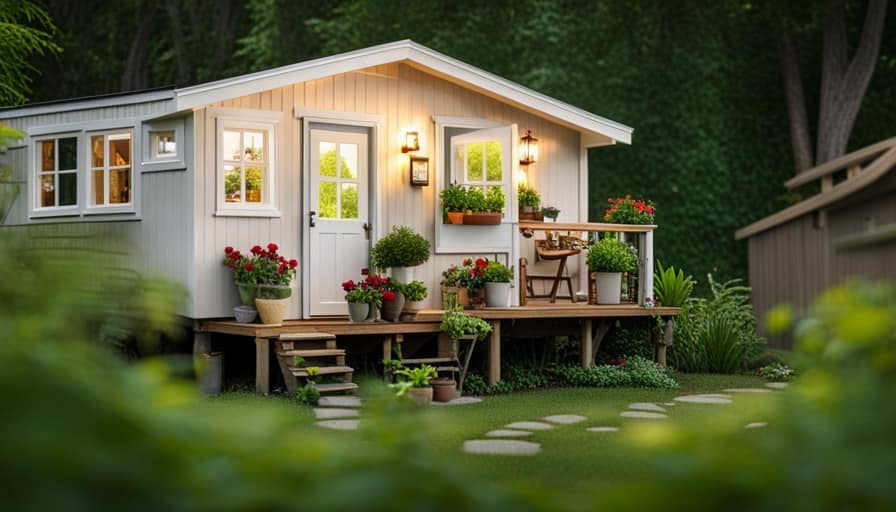
Designing Your Dream Tiny House
Designing my dream tiny house involves carefully considering every aspect of the layout, from the placement of windows to the selection of materials. When it comes to interior design, I want to create a space that’s both functional and aesthetically pleasing.
To evoke a sense of coziness and comfort, I plan on incorporating warm colors and natural textures. Additionally, I’ll use clever storage solutions such as built-in shelves and hidden compartments to optimize the limited space.
Another important consideration is maximizing natural light through strategically placed windows and skylights. I believe that by paying attention to every detail and utilizing space optimization techniques, I can create a tiny house that not only meets my needs but also provides a sense of fulfillment and tranquility.
Now that I’ve designed my dream tiny house, it’s time to move on to securing permits and legal considerations.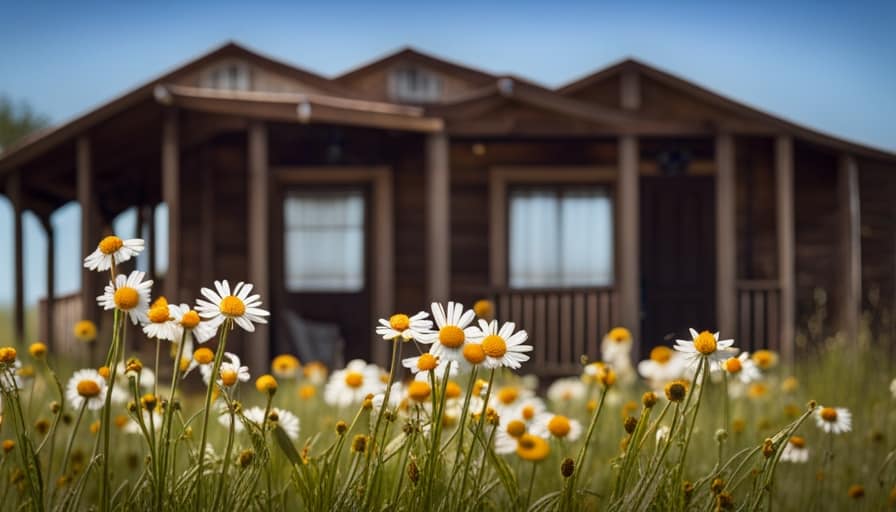
Securing Permits and Legal Considerations
Before beginning construction, it’s important to familiarize myself with the local building codes and regulations to ensure that I secure the necessary permits for my tiny house.
Zoning requirements and building codes vary from one location to another, so it’s crucial to research and understand the specific regulations in my area. This includes determining if there are any size limitations or restrictions on where I can build my tiny house.
Contacting the local building department or zoning office is a good starting point for gathering information and submitting the necessary paperwork. It’s important to note that failure to obtain the proper permits may result in fines or even the demolition of my tiny house.
Once I’ve a clear understanding of the legal considerations, I can move on to selecting the appropriate building materials and construction techniques for my tiny house project.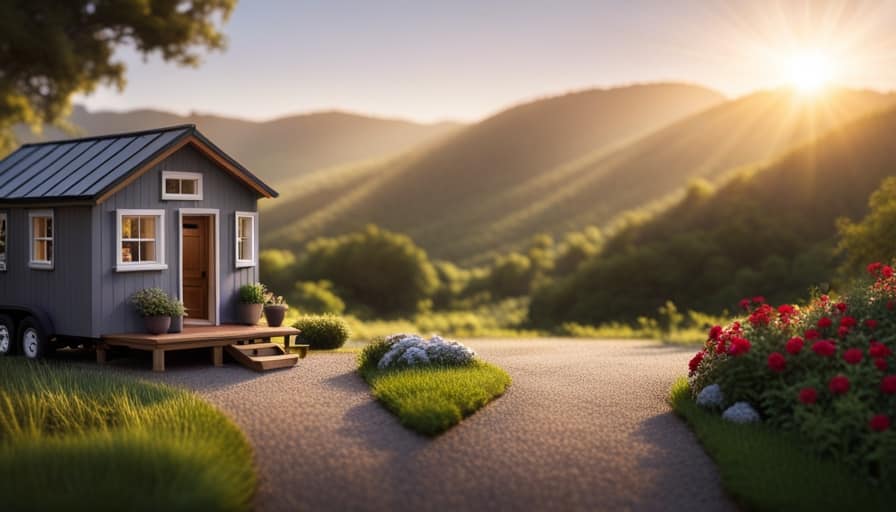
Building Materials and Construction Techniques
When choosing the building materials for my tiny house, I’ll need to carefully consider the quantity and quality of each material. It’s important for me to find alternative building methods and cost-effective materials that will help me stay within my budget without sacrificing the integrity and durability of my tiny house.
Here are three options that I’m considering:
-
Recycled materials: Using reclaimed wood or salvaged materials not only helps reduce waste but also adds character to my tiny house.
-
Prefabricated panels: Opting for pre-made panels can save time and effort during construction while still ensuring structural strength.
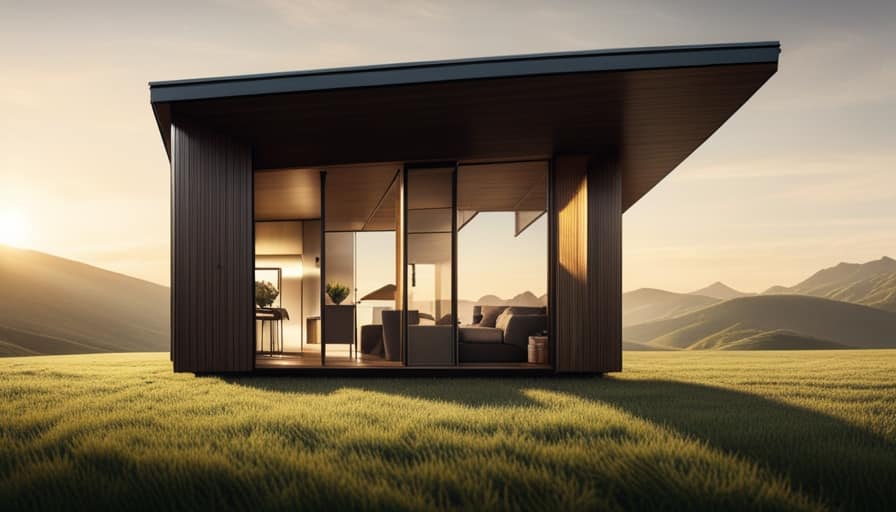
-
Energy-efficient insulation: Investing in insulation materials that are eco-friendly and offer high thermal resistance will help me reduce energy consumption and save on heating and cooling costs.
Adding the Finishing Touches and Making It Home
Once the construction is complete, I can start adding the final touches and making my tiny house feel like home.
Decorating a tiny house can be challenging due to limited space, but with a few tips, it can be transformed into a cozy and inviting space.
First, consider using light-colored paint to make the interior feel more spacious. Mirrors can also create an illusion of a larger space.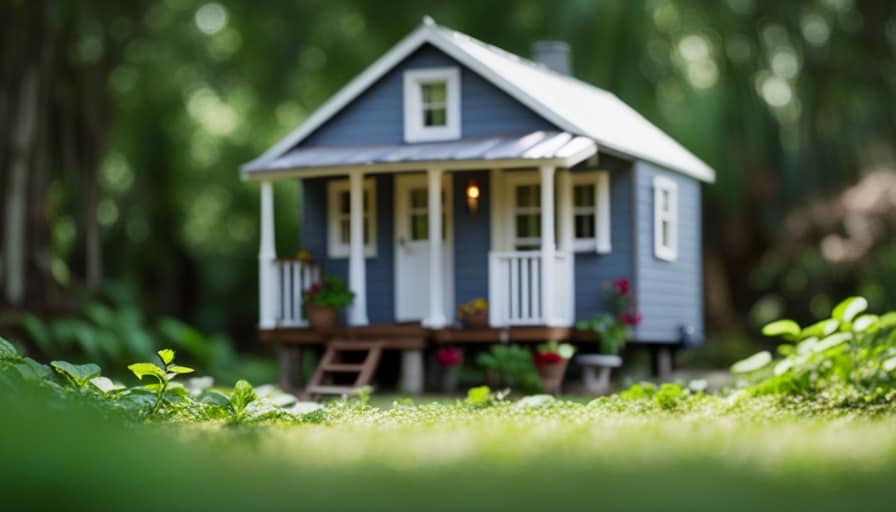
When it comes to furniture, choose multi-functional pieces such as a sofa bed or a coffee table with hidden storage compartments. Utilize vertical space by installing shelves or hanging organizers. Additionally, make use of under-bed storage or built-in cabinets.
Lastly, personal touches like artwork, plants, and cozy textiles can add warmth and personality to the space.
With these decorating tips and creative storage solutions, my tiny house will truly become a comfortable and functional home.
Frequently Asked Questions
How Much Does It Cost to Build a Tiny House?
Building a tiny house involves cost considerations and financing options. It’s important to research materials, labor, permits, and utilities to estimate the total cost. Explore financing options like personal loans or saving up.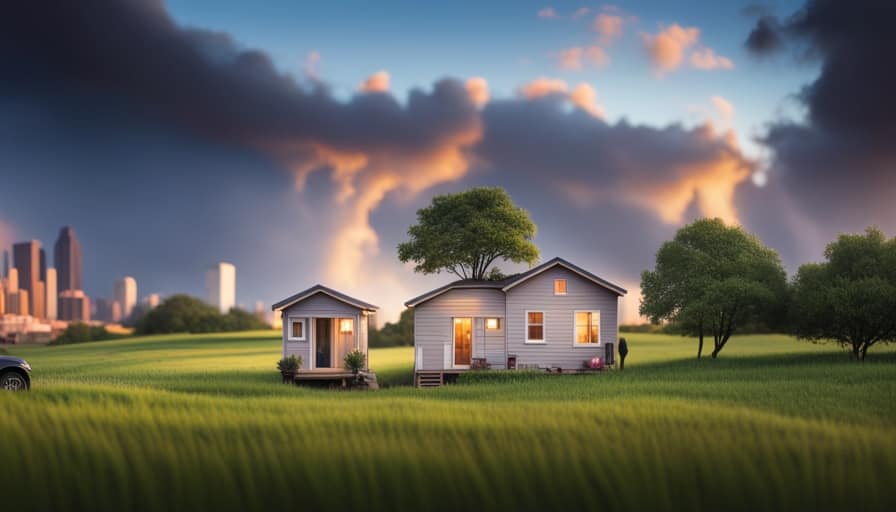
Can I Build a Tiny House on My Own Without Any Construction Experience?
Yes, you can build a tiny house on your own without any prior construction experience. It will require learning new skills, such as basic carpentry and electrical work, but with dedication and guidance, it is definitely achievable.
Are There Any Restrictions on the Size of a Tiny House?
There are restrictions on the size of a tiny house, which are determined by local zoning regulations and building codes. It’s important to research and comply with these guidelines to ensure a successful construction process.
Do I Need to Have a Specific Type of Insurance for My Tiny House?
I need to have insurance coverage for my tiny house. There are various policy options available, such as liability and property coverage. It’s important to research and choose the right policy for my specific needs.
Can I Park My Tiny House on Any Type of Land?
I can park my tiny house on certain types of land, but there may be parking restrictions and zoning regulations to consider. It’s important to research and comply with local laws before choosing a location.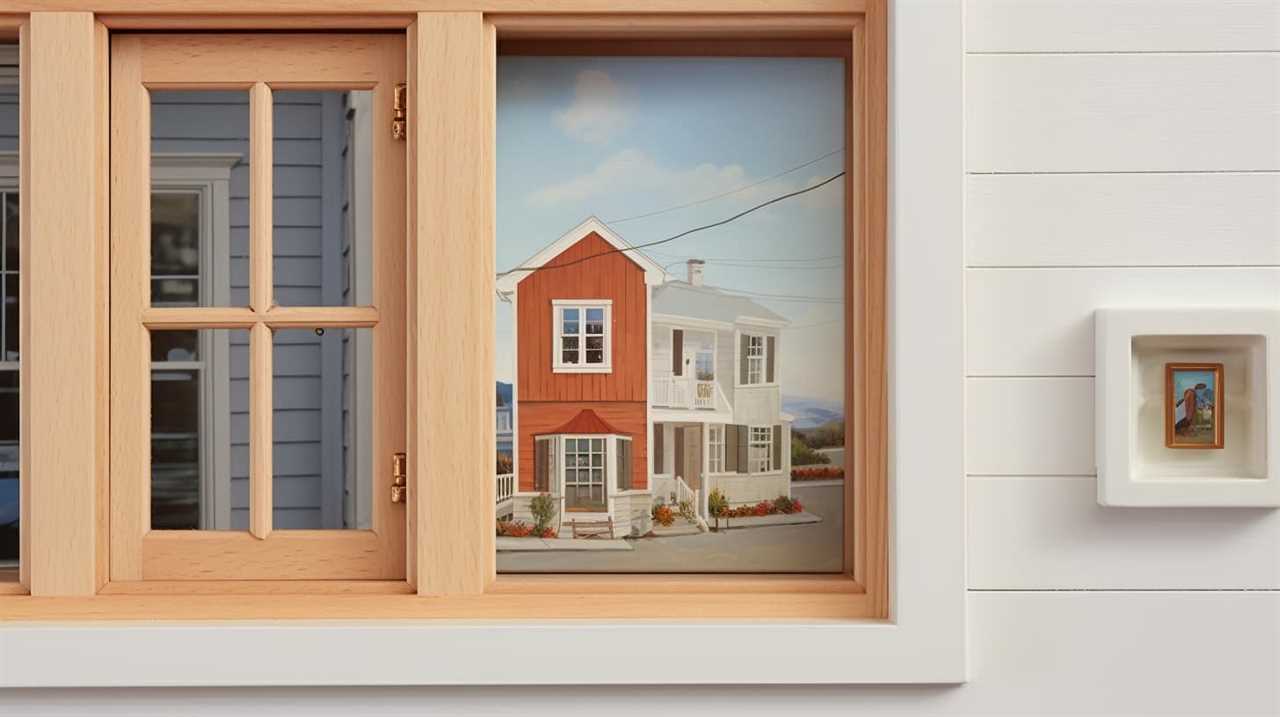
Conclusion
In conclusion, building your own tiny house is an exciting and rewarding endeavor. By carefully considering location, design, permits, and construction techniques, you can create your dream home on a smaller scale.
Remember, it’s not just about the physical structure, but also about the personal touches that make it feel like home. Just like a puzzle, each piece fits together to create a beautiful and unique masterpiece that reflects your personality and lifestyle.
So go ahead, start building your own tiny house and watch your dreams come to life.
I’m Theodore, and I love tiny houses. In fact, I’m the author of Tiny House 43, a book about tiny houses that are also tree houses. I think they’re magical places where imaginations can run wild and adventures are just waiting to happen.
While tree houses are often associated with childhood, they can be the perfect adult retreat. They offer a cozy space to relax and unwind, surrounded by nature. And since they’re typically built on stilts or raised platforms, they offer stunning views that traditional homes simply can’t match.
If you’re looking for a unique and romantic getaway, a tree house tiny house might just be the perfect option.
Common Challenges
How Do I Find a Tiny House for Sale
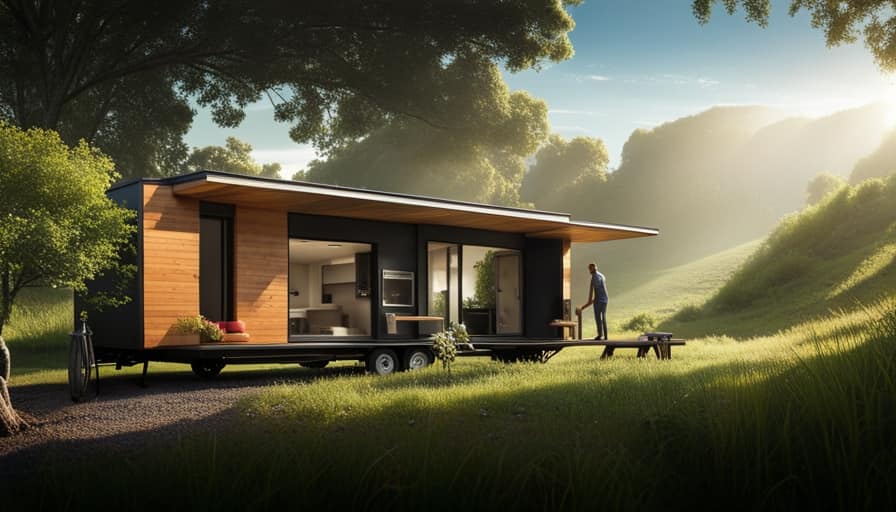
Are you in search of a small house for sale? You’re not the only one! The tiny house movement has been gaining momentum, with around 10,000 tiny houses in the United States.
If you’re ready to downsize and embrace a simpler, more sustainable lifestyle, I’ve got you covered. In this article, I’ll show you the best ways to find your dream tiny house, from online listings and real estate agents to tiny house builders and communities.
Let’s get started on this exciting journey together!
Key Takeaways
- Online listings and marketplaces such as Zillow, Craigslist, and Tiny House Marketplace are convenient platforms to find a wide range of tiny houses for sale, offering essential details like price, location, and square footage.
- Local real estate agents and brokers have expertise in the local market trends of tiny houses and can provide valuable insights and assistance in navigating the purchasing process, including guidance on financing options specific to tiny houses.
- Reputable builders like Tiny Heirloom, Tumbleweed, and Escape specialize in constructing unique tiny homes, offering custom design options and financing choices, allowing you to have a say in the design and layout of your tiny home.
- Attending tiny house communities and events provides opportunities to connect with like-minded individuals, gain education on zoning regulations and financing options, tour different tiny house models for inspiration, and build a supportive community of tiny house enthusiasts.
Online Listings and Marketplaces
I can search for a tiny house for sale on online platforms like Zillow or Craigslist. These platforms provide a wide range of options for those looking to purchase a tiny house.
One of the first things to consider when searching for a tiny house is the financing options available. Many lenders now offer specific tiny house financing options, making it easier for buyers to secure a loan.
Additionally, if you’re interested in building your own tiny house, there are plenty of DIY tiny house building tips available online. These resources can help you navigate the process and provide valuable insights into construction techniques, materials, and design ideas.
Whether you choose to buy or build, online platforms offer a convenient and accessible way to find your dream tiny house.
Local Real Estate Agents and Brokers
Local real estate agents and brokers can provide valuable assistance in finding a tiny house for sale and navigating the purchasing process. Here are three reasons why working with a local real estate agent or broker is beneficial: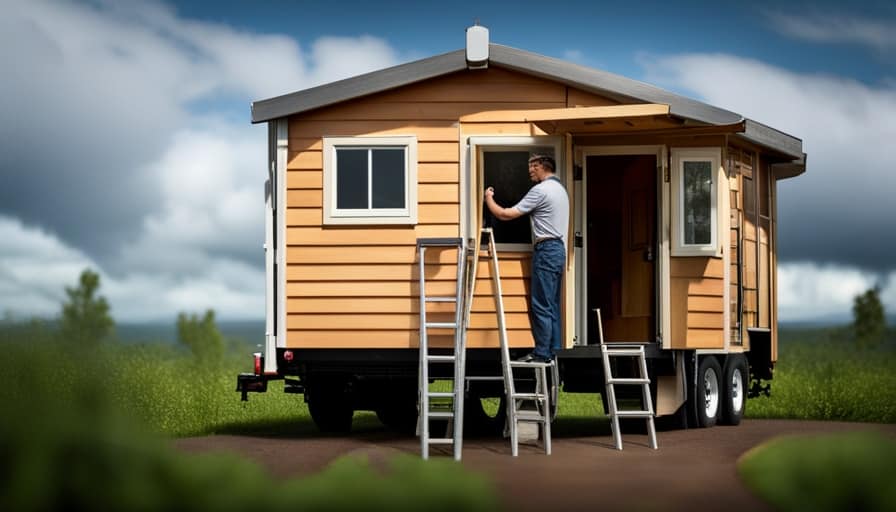
-
Expertise in the local market trends: Local agents and brokers have a deep understanding of the tiny house market in your area. They can provide insights into the current trends, pricing, and availability, helping you make informed decisions.
-
Access to exclusive listings: Real estate professionals often have access to listings that aren’t publicly available. They can help you discover hidden gems and off-market properties that fit your criteria.
-
Knowledge of financing options: Buying a tiny house involves unique financing considerations. Local agents and brokers can guide you through the process, connecting you with lenders who specialize in tiny house financing and helping you explore different options.
Tiny House Builders and Manufacturers
When searching for a tiny house, one option to consider is working with reputable tiny house builders and manufacturers that specialize in constructing these unique homes. These builders offer custom design options and often have financing options available to make owning a tiny house more accessible. By working with a builder or manufacturer, you can have a say in the design and layout of your tiny home, ensuring that it meets your specific needs and preferences. Additionally, many builders have experience in maximizing space and incorporating innovative storage solutions, making tiny living more comfortable and functional. To help you make an informed decision, here is a table showcasing four well-known tiny house builders and manufacturers: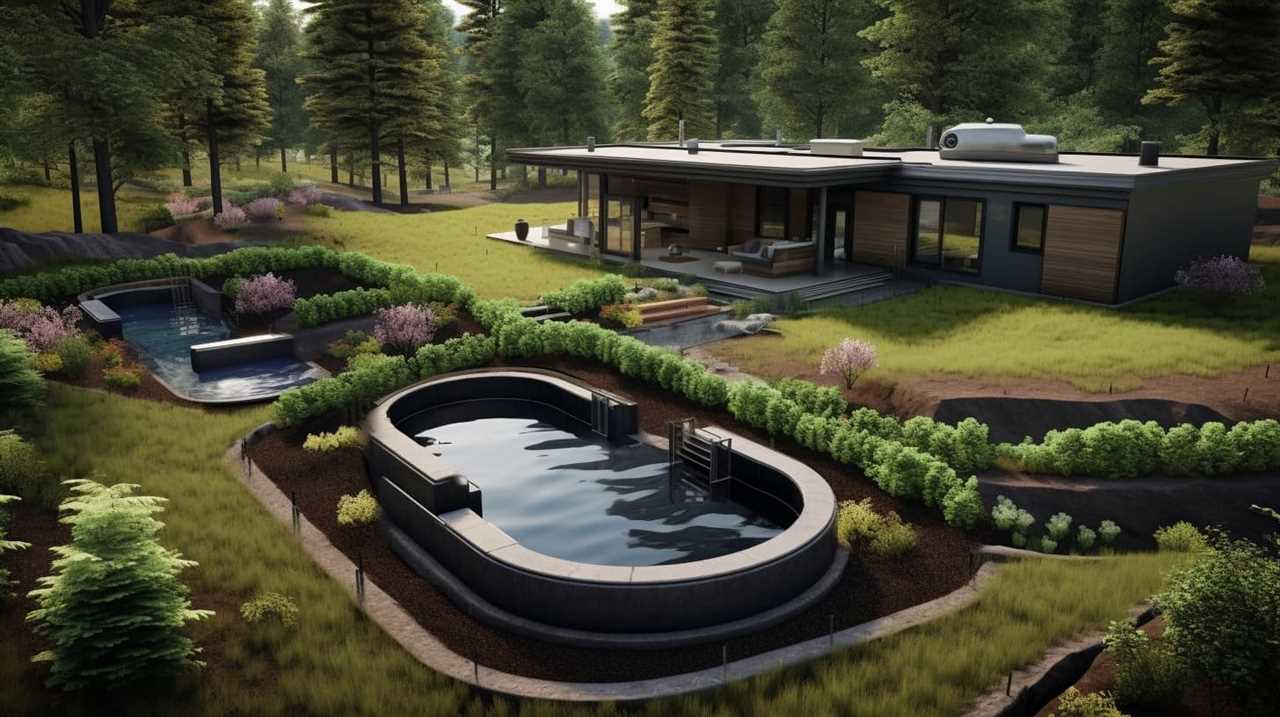
| Builder/Manufacturer | Location | Financing Options | Custom Design |
|---|---|---|---|
| Tiny Heirloom | Oregon | Yes | Yes |
| Tumbleweed | Colorado | Yes | Yes |
| Escape | Wisconsin | Yes | Yes |
| B&B Micro | Florida | No | Yes |
Tiny House Communities and Events
One of the best ways to immerse yourself in the tiny house lifestyle is by attending tiny house communities and events happening throughout the year. These gatherings provide an opportunity to connect with like-minded individuals, learn from experienced tiny house dwellers, and gain valuable insights into the world of tiny living.
Here are a few reasons why you should consider attending these events:
- Networking: Meet other tiny house enthusiasts and build a supportive community.
- Education: Gain knowledge on topics such as tiny house zoning regulations and financing options.
- Inspiration: Get inspired by touring different tiny house models and hearing success stories from those who’ve already made the transition.
By attending tiny house communities and events, you can gather valuable information and resources that will help you on your journey to living tiny.
Now, let’s explore how social media and online forums can further assist you in your quest for a tiny home.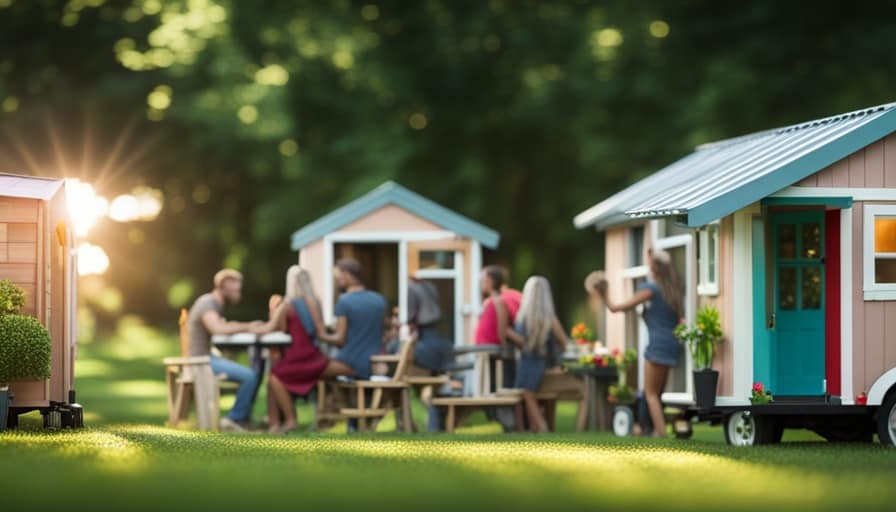
Social Media and Online Forums
I can easily connect with other tiny house enthusiasts and find valuable information through social media and online forums. These platforms provide a wealth of knowledge on local zoning regulations and financing options for tiny house purchases.
By joining relevant groups and forums, I can engage in conversations with experienced individuals who can offer advice and guidance on navigating the complexities of local zoning regulations. Additionally, I can learn about different financing options available for purchasing a tiny house, such as personal loans, RV loans, or even crowdfunding platforms specifically designed for tiny house enthusiasts.
Social media and online forums provide a supportive community where I can gather information, ask questions, and connect with like-minded individuals who share my passion for tiny house living.
Frequently Asked Questions
Are There Any Financing Options Available for Purchasing a Tiny House?
There are various financing options available for purchasing a tiny house, including alternative housing loans. These options provide flexibility and convenience for those looking to invest in the tiny house lifestyle.
What Are the Legal Requirements and Regulations for Living in a Tiny House?
Finding a tiny house for sale can be challenging, but it’s important to first understand the legal requirements and zoning regulations for living in one. This will ensure a smooth and hassle-free experience.
How Do I Transport a Tiny House to a Different Location?
To transport a tiny house to a different location, consider hiring professional movers who specialize in transporting tiny houses. They have the expertise and equipment to ensure a safe and efficient move.
Are There Any Restrictions on Where I Can Park or Place a Tiny House?
When it comes to parking or placing a tiny house, there are certain regulations and restrictions to consider. For example, some areas may have zoning laws that dictate where you can park or place a tiny house.
Can I Customize or Modify a Pre-Built Tiny House to Suit My Preferences?
Yes, you can customize or modify a pre-built tiny house to suit your preferences. There are various options available for customization, allowing you to create a space that meets your specific needs and style.
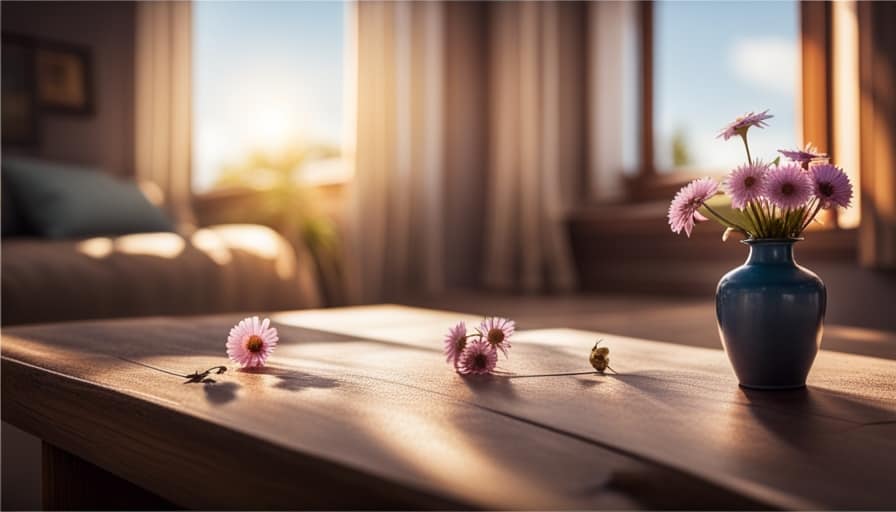
Conclusion
If you’re looking to buy a tiny house, there are several avenues you can explore. Online listings and marketplaces provide a wide range of options to choose from.
Local real estate agents and brokers can also assist you in finding the perfect tiny house.
Additionally, contacting tiny house builders and manufacturers can lead you to available properties.
Don’t forget to check out tiny house communities and events for potential leads.
With so many resources available, finding your dream tiny house is just a click away.
I’m Theodore, and I love tiny houses. In fact, I’m the author of Tiny House 43, a book about tiny houses that are also tree houses. I think they’re magical places where imaginations can run wild and adventures are just waiting to happen.
While tree houses are often associated with childhood, they can be the perfect adult retreat. They offer a cozy space to relax and unwind, surrounded by nature. And since they’re typically built on stilts or raised platforms, they offer stunning views that traditional homes simply can’t match.
If you’re looking for a unique and romantic getaway, a tree house tiny house might just be the perfect option.
-

 Beginners Guides2 weeks ago
Beginners Guides2 weeks agoHow To Buy A Tesla Tiny House
-

 Energy Efficiency2 months ago
Energy Efficiency2 months agoBest Tiny Homes For Cold Climates
-

 Beginners Guides1 week ago
Beginners Guides1 week agoTiny House Nation Where Are They Now Stephanie
-

 Tiny House Resources (e.g., legalities, cost, insurance, FAQs)2 months ago
Tiny House Resources (e.g., legalities, cost, insurance, FAQs)2 months agoDo Tiny Homes Need Planning Permission?
-

 Beginners Guides2 weeks ago
Beginners Guides2 weeks agoFrom The Show Tiny House Nation How Many Keep Their Tiny House?
-

 Beginners Guides2 months ago
Beginners Guides2 months agoUsing a Climbing Net For Treehouse Construction
-

 Beginners Guides2 months ago
Beginners Guides2 months agoHow to Build a Treehouse Without Drilling Into the Tree
-

 Beginners Guides3 weeks ago
Beginners Guides3 weeks agoTiny House Nation Who Pays For The Houses





